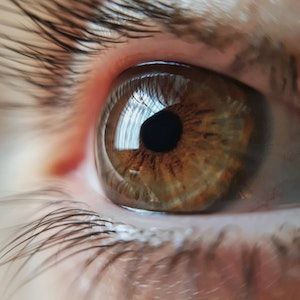Growing Prevalence Of Diabetic Retinopathy Observed Among Medicare Beneficiaries
An increase in annual prevalence of beneficiaries with diabetes was observed in those who had ≥1 claim for DME (1.0% to 3.3%) and DME/VTDR (2.8% to 4.3%).

The prevalence of diabetic macular edema or vision-threatening diabetic retinopathy (VTDR) increased among Medicare Part B Fee-for-Service beneficiaries 65 years and older over a 10-year period (2009 - 2018), according to new findings.
By 2018, 1 in 25 beneficiaries with diabetes had vision threatening disease, with additional findings on documented racial and ethnic disparities in prevalence and treatment of these conditions in the Medicare population.
“From 2005 to 2050, it is projected that there will be a nearly 3-fold increase in the United States in the number of people with DR (from 5.5 million to 16.0 million) and vision-threatening DR (from 1.2 million to 3.4 million),” wrote study author Elizabeth A. Lundeen, PhD, Centers for Disease Control and Prevention.
The cross-sectional study used Centers for Medicare & Medicaid Services research identifiable files during the study period for beneficiaries continuously enrolled in Medicare Part B FFS insurance for 12 months.
Primary outcomes were the annual national crude prevalence of Medicare Part B FFS beneficiaries with 1 or more claims for DME/VTDR. Prevalence was calculated as the number of continuously enrolled beneficiaries with diabetes who had ≥1 more claims for DME/VTDR divided by the number of continuously enrolled beneficiaries with diabetes in the year.
Then, key secondary outcomes were treatment of vision threatening diabetes-related eye disease containing procedure codes used to define 4 treatment types, including anti-VEGF injections, laser photocoagulation, vitrectomy, and retinal detachment repair.
A total of 6,960,823 (27.4%) beneficiaries had diabetes in 2018, with 49.7% of the population aged 65 - 74 years and 52.7% women. The majority of beneficiaries with diabetes were non-Hispanic White (75.7%).
Data show the annual crude national prevalence of Medicare beneficiaries with diabetes who had ≥1 claims for DME/VTDR increased from 2.8% in 2009 to 4.3% in 2018. From 2009 - 2018, a trendline for DME showed an increase in prevalence from 1.0% of beneficiaries with diabetes to 3.3%, while claims for non-vision threatening diabetes-related eye disease decreased from 11.3% to 7.3%.
Additionally, the annual prevalence of anti-VEGF injections more than doubled among those with any DME (15.7% - 35.2%) or VTDR with DME (20.2% to 47.6%). Contrastingly, the annual prevalence of laser photocoagulation decreased significantly among those with any DME (45.5% to 12.5%), VTDR with DME (54.0% to 20.3%), and VTDR without DME (22.5% to 5.8%).
Further data show the prevalence of any DME and DME/VTDR was highest among Hispanic beneficiaries (5.0% and 7.0%, respectively) and Black beneficiaries (4.5% and 6.2%, respectively), but lowest among non-Hispanic White beneficiaries (3.0% and 3.8%, respectively). Anti-VEGF was most prevalent among non-Hispanic White (30.3%) and Hispanic (28.3%) beneficiaries.
"Better understanding optimal treatment regimens and associated cost-effectiveness is vital, as DR was estimated to cost Medicare FFS $753 million in 2018," Lundeen concluded.
The study, “Trends in Prevalence and Treatment of Diabetic Macular Edema and Vision-Threatening Diabetic Retinopathy Among Medicare Part B Fee-for-Service Beneficiaries,” was published in JAMA Ophthalmology.